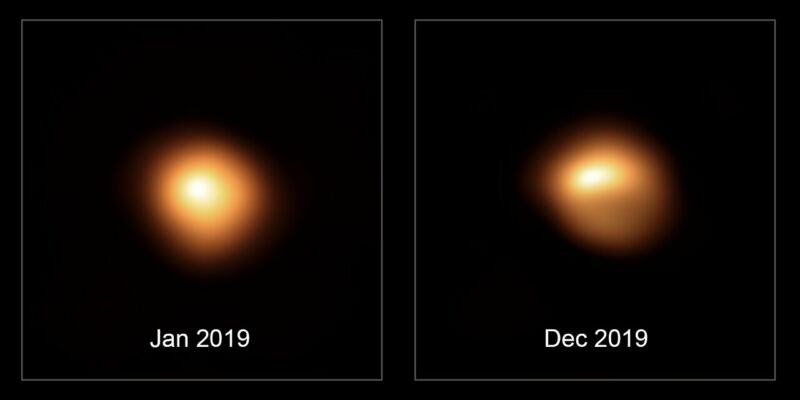New images of the star's surface taken using ESO's Very Large Telescope shed light on recent and mysterious dips in brightness of the star Betelgeuse. The culprit is a gigantic cloud of dust.
Betelgeuse, a supergiant found in the Constellation of Orion, is an end-of-life star likely to explode within the next 100,000 years, hence the interest astronomers when the object, smaller and closer than previously thought, began to exhibit irregular dips in brightness as early as December 2019 , suggesting the onset of instability.
Other significant dips in luminosity were also recorded between January and March 2020, to the point that Betelgeuse, normally ranked 10th on the chart of the brightest stars in the world night sky, had been downgraded to 21st!
To explain these gradations, some have argued that Betelgeuse, a so-called "variable" star (whose brightness varies over time), experienced a episode of fluctuation exceptional . Others, however, have suggested that the object emitted a large puff of gas that may have "shadowed" it . A new study published in the journal Nature confirms this second explanation.

As part of this work, Miguel Montargès and his team used the Spectro-Polarimetric High Contrast Exoplanet REsearch (SPHERE) instrument, installed on the Very Large Telescope (VLT) from the European Southern Observatory (ESO), in Chile, to directly image the surface of Betelgeuse between December 2019 and March 2020. The following month, the star had returned to its normal luminosity. Thanks to these observations, the researchers discovered that the mysterious dimming in brightness was caused by a dusty veil shading the star .
The surface of Betelgeuse is steadily changing as giant bubbles of gas move around, shrinking and swelling inside the star. In this case, the star would have ejected one of these large bubbles of gas which, as the surface of Betelgeuse began to cool, would have condensed into solid dust. "We directly witnessed the formation of 'stardust “, explains Dr. Montargès.
Researchers now eagerly await the commissioning of ESO's Extremely Large Telescope (ELT). “With the ability to reach unparalleled spatial resolutions, the ELT will allow us to directly image Betelgeuse in remarkable detail “, they write. "It will also greatly expand the sample of red supergiants for which we can resolve the surface by direct imaging, further helping us unravel the mysteries behind the winds of these massive stars “.